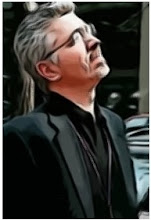 (Click on the picture above for a short video intro to the Great Migration)
(Click on the picture above for a short video intro to the Great Migration)As I mentioned on Thursday, I think it would be a good idea to look at
Blood on the Forge as one version of a much broader and familiar narrative of the Great Migration. Let's try to understand how Attaway's novel works within and against this bigger narrative by looking at some of the other texts of the Great Migration. Browse the links below to get a better grasp of the context for
Blood on the Forge. As you look through these materials ask yourselves some questions: what similarities to Attaway (in plot, character, theme) do you see? How does Attaway read and write the (characters, plots, themes of) the Great Migration narrative in new or different ways?
You might start
here for a good overview of the Great Migration (and its
sequel). Another good overview, including images and sounds, can be found on the
American Social History website.
Many everyday people wrote their own versions of the narrative. You can find some examples
here and
here and
here.
The Great Migration transformed many Northern cities, including Chicago. The
Library of Congress offers some images, documents, and narratives about life in the "Promised Land" of Southside Chicago. And you can find a great introduction to the landscape of Chicago's "Bronzeville"
here. Harlem was, of course, another rich destination for migrants. The famous "
Harlem Number" edition of the 1925 Survey Graphic is one fruit of the Migration.
One of the richest and most beautiful documents of the Great Migration is
Jacob Lawrence's
Migration Series.
Perhaps the most popular medium for African-Americans to think about the migration northward was the blues. The blues sang the meaning of the migration in several registers, from joy to sadness. You can listen to some blues
here and
here, and you can read some blues lyrics
here.







